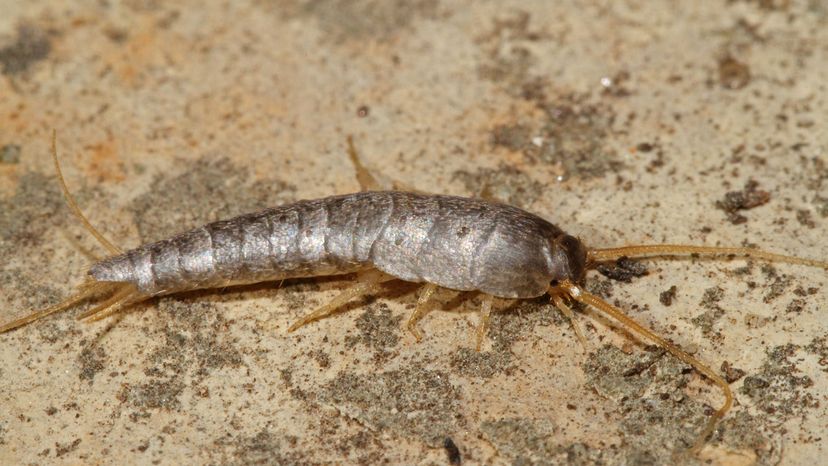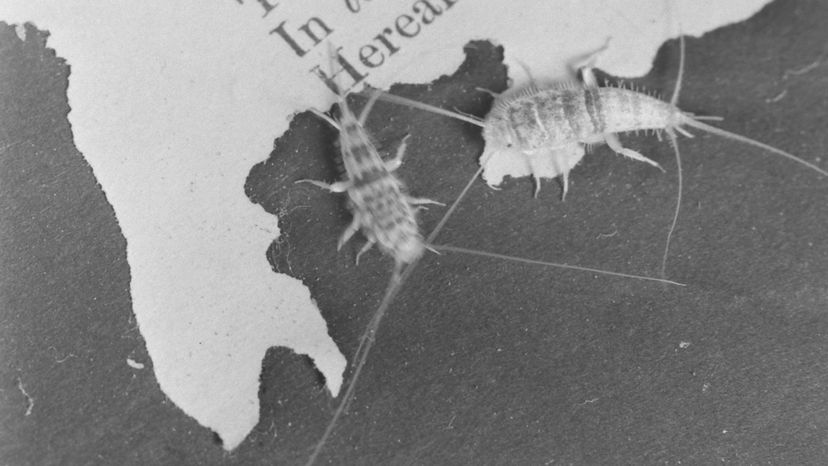
If you've ever gone through old boxes in your attic and spotted some silverfish, you might be grossed out. But where do silverfish come from, are they dangerous, and how do you get rid of them?
Advertisement

If you've ever gone through old boxes in your attic and spotted some silverfish, you might be grossed out. But where do silverfish come from, are they dangerous, and how do you get rid of them?
Advertisement
You may be happy to know that they don't do nearly the same damage as other pests, like termites, and they're not harmful to humans. "Silverfish like to chew on things, especially paper or fabrics that may have starch or sugar residues embedded in them, such as wallpaper with the starch-based glue that was used to hold it in place," says Doug Webb, manager of technical services for pest control company Terminix in an email [source: Terminix]. "Another example would be clothing that has been starched. Silverfish chew on the fabric to get the starch, but in the process damage the fabric."
These wingless insects once made themselves at home in books (since books are bound with glue), but not so much now [source: Zoppi]. Years ago, most glues were produced using animal byproducts or other natural materials that contained a high starch, sugar or animal protein content.
Advertisement
"Newer types of glue are products of modern chemistry and would be of no interest to silverfish because they have no nutritional value," Webb explains.
Silverfish (Lepisma saccharina) have been scuttling around the world for more than 400 million years and remain pretty much the same as in their pre-dinosaur days.
"Other than size, they have evolved very little in that time," emails Scot Hodges A.C.E., vice president of technical services with Arrow Exterminators [source: Arrow Exterminators]. "They are impressive survivors which may explain why they have had little need to evolve. Some sources claim they can live up to 6 months without food or water so long as they have one or the other."
Advertisement
Appropriately, silverfish are prehistoric in appearance. Often described as "carrot-like" in shape, these shiny and gray animals have tiny scales throughout their bodies, which makes them look silver.
"The common name 'silverfish' comes from the fact that they are gray to silver in color and wiggle as they run in a manner that looks like a fish swimming," says Webb. They shed their skins well into adult life (you may have seen their scales lurking in your house).
Advertisement

Here's a breakdown of their main anatomical features:
Advertisement
Unlike most of the world's other insects, urban silverfish don't seem to have a lot of redeeming qualities. "They do not serve any beneficial purpose to man that I am aware of," Webb says. So you shouldn't fret about getting rid of them.
They aren't exactly begging to be found, as silverfish hide in areas that people rarely enter. "They can be found in any part of the home, but seem to prefer dark undisturbed places," Hodges explains, noting that dark, high-humidity spots such as crawl spaces, unfinished basements and attics are prime silverfish real estate. "These areas are suitable environments for them and are also where homeowners keep stored items that provide them harborage and food." They tend to enter homes to avoid weather extremes and wind up staying because the atmosphere is just so hospitable to silverfish eggs.
Advertisement
These nocturnal creatures generally take quite a long time to reproduce enough to reach infestation status. To prevent silverfish infestations, it's best to minimize your accumulation of junk. "The key to control is to limit or eliminate harborage," Hodges says. "Large infestations are often linked to stored items and clutter."
If you do happen to find silverfish, it's not a disgusting cleanup. "Often, vacuuming them is the fastest and easiest way to get rid of them," emails Frank Meek, technical services manager with the pest control services company Orkin.
He also suggests inspecting your home once per year at minimum to identify any spots where silverfish live and pests can enter. "If you store items in your basement or attic, make sure they are in hard plastic containers, not cardboard boxes. When moving storage items, inspect them first and make sure you aren't transporting these nocturnal pests into a new space," he says.
Webb's team at Terminix generally identifies any food sources that silverfish find irresistible, like starch residue on the floor of a utility room or food spillage from starchy foods like grains, pasta and cereal. "It is also important to reduce humidity in higher humidity areas within the home by circulating the air with fans, using dehumidifiers or other moisture reduction methods."
If silverfish have already gotten out of control, Meek says to seek professional help. "If you see a sign of a silverfish infestation, contact your local pest control professional who will assess the situation within your home and determine the most effective methods of extermination for your specific problem."
Advertisement
Here are a few species that you might confuse for silverfish:
This article was updated in conjunction with AI technology, then fact-checked and edited by a HowStuffWorks editor.
Advertisement
Please copy/paste the following text to properly cite this HowStuffWorks.com article:
Advertisement